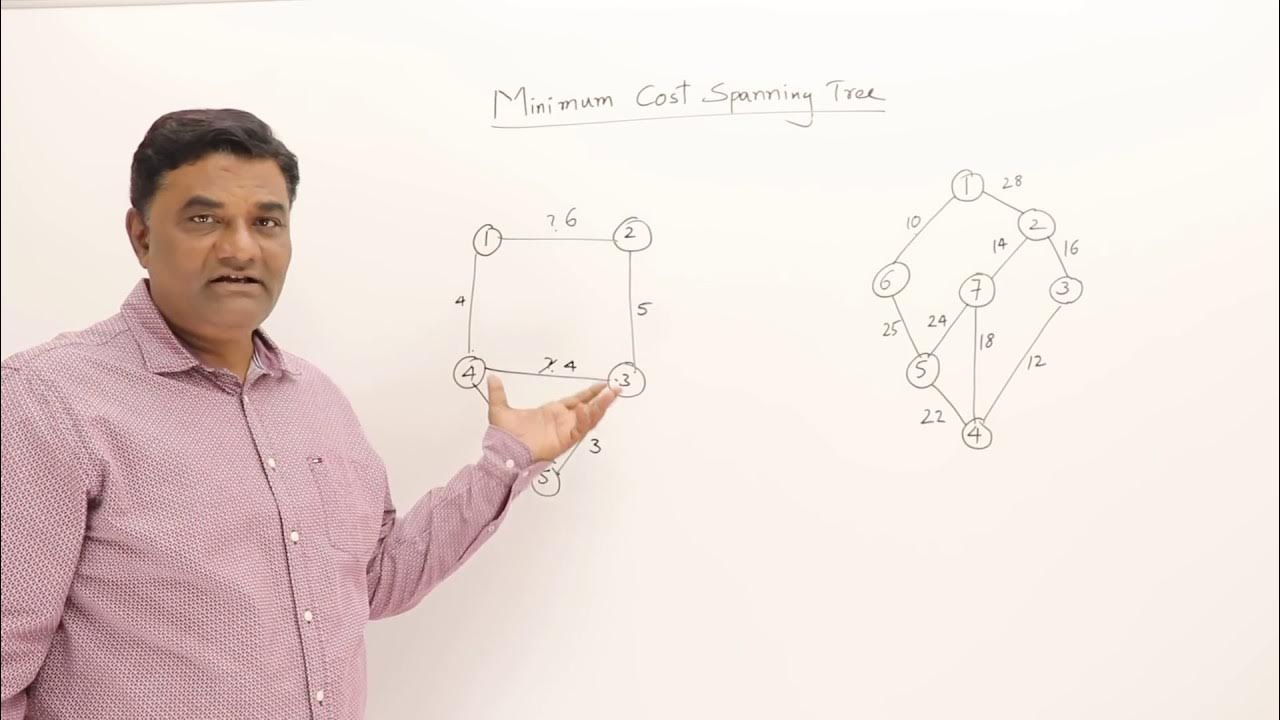Introduction : Emergence of Connectedness
Summary
TLDRThe video script delves into the concept of graph connectivity, questioning why graphs in real-world scenarios, like friendships among people, tend to be connected. It uses the analogy of shooting targets and picking balls from a basket to illustrate the improbability of forming a graph without any connections between distinct groups. The speaker emphasizes that with a sufficient number of edges or choices, it's highly unlikely that no 'across' connections are formed, suggesting that randomness leads to an interconnected graph.
Takeaways
- 📊 The importance of datasets is highlighted, emphasizing the current era's abundance of data and the need to make sense of it.
- 🔍 There are times when understanding networks does not require extensive datasets, suggesting alternative methods of analysis.
- 🎓 The lecturer will teach how to analyze graphs without relying on datasets, focusing on the general properties of graphs.
- 🔗 The concept of a graph becoming connected is introduced, questioning why graphs in the real world are often connected despite initial separations.
- 🤔 A classroom scenario is presented to illustrate the point of a graph becoming connected as friendships form among students.
- 🎯 An analogy of a shooting target is used to explain the concept of randomness and the likelihood of connections forming within a defined area.
- 🚫 It is very unlikely for no connections to form across two separate groups, especially when there are many opportunities for such connections.
- 📐 The mathematics of possible friendships is discussed, using combinatorial calculations to determine the total number of potential connections.
- ⚖️ The comparison of 'across' and 'within' friendships is made, pointing out the improbability of having no 'across' friendships given the number of possibilities.
- 🎲 A basket of balls analogy is used to further explain the improbability of a random selection not including any 'across' connections.
- 🔮 The intuition is that as more edges (or balls, or bullets) are added, the likelihood of having no connections across two groups decreases significantly.
Q & A
What is the main topic discussed in the script?
-The main topic discussed in the script is the concept of graph connectivity and the probability of forming connections within a network, using the analogy of a classroom full of people and their friendships.
Why does the speaker mention the importance of datasets?
-The speaker mentions the importance of datasets as a starting point, acknowledging that while datasets are crucial for understanding patterns, the script will focus on understanding networks without relying heavily on datasets.
What is the analogy used by the speaker to explain the improbability of certain network structures?
-The speaker uses the analogy of shooting bullets randomly within a rectangle, where the bullets represent friendships and the rectangle represents the total possible connections, to explain the improbability of certain network structures.
How does the speaker describe the classroom scenario with friendships forming?
-The speaker describes a classroom with a hundred people and imagines friendships forming randomly. The scenario questions whether it's possible for friendships to form only within two separate groups with no connections across the groups.
What is the mathematical concept used to calculate total possible friendships in the classroom scenario?
-The mathematical concept used is 'n choose 2', which calculates the total number of ways to form pairs from a group of n individuals, in this case, 100.
Why does the speaker say it's unlikely for no friendships to form across two separate groups?
-The speaker argues it's unlikely because there are many possible ways for friendships to form across the groups, and the probability of none forming is low, similar to the low probability of all bullets missing a certain area when shot randomly.
What is the 'hundred choose two' calculation mentioned in the script, and what does it represent?
-'Hundred choose two' is a combinatorial calculation representing the total number of ways to choose 2 people from a group of 100 to form a friendship, which is approximately 5,000.
How does the speaker use the concept of picking balls from a basket to illustrate the improbability of certain outcomes?
-The speaker uses the concept of picking balls from a basket, where half are black and half are white, to illustrate that picking only black balls when picking randomly is improbable, similar to the improbability of no friendships forming across two groups.
What does the speaker mean by 'sufficiently many edges' in the context of graph theory?
-By 'sufficiently many edges', the speaker means that when a large number of connections are present in a graph, it becomes very unlikely for all connections to be within separate groups without any crossing over.
What conclusion does the speaker draw about the formation of connections in networks?
-The speaker concludes that in a network with a large number of potential connections, it is very unlikely for the network to remain divided into separate components without any connections across them, as there are too many opportunities for 'across' connections to form.
Outlines

This section is available to paid users only. Please upgrade to access this part.
Upgrade NowMindmap

This section is available to paid users only. Please upgrade to access this part.
Upgrade NowKeywords

This section is available to paid users only. Please upgrade to access this part.
Upgrade NowHighlights

This section is available to paid users only. Please upgrade to access this part.
Upgrade NowTranscripts

This section is available to paid users only. Please upgrade to access this part.
Upgrade NowBrowse More Related Video

Matematika Diskrit - Part 3 - Siklus, Sub Graf, Komponen, dan Varian Graf

#9 Konsep Struktur Data Graph pada Pemrograman | STRUKTUR DATA

3.5 Prims and Kruskals Algorithms - Greedy Method

Matematika Diskrit - Graf (Graph) - Part 1 - Konsep Umum Graf

Introduction to Graph Theory: A Computer Science Perspective

Exam Hack | CIE AS Maths | P1 | Function Transformations Question
5.0 / 5 (0 votes)